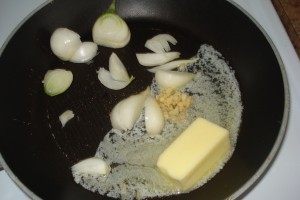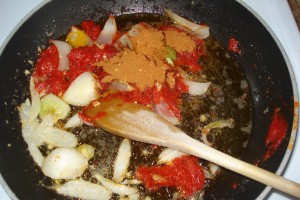The silver lining is, it’s always more enjoyable to write — and read — blogs about things that suck.
Oh, Groupon. There was a time when you were a wonderland of cheap, delicious meals. I think restaurants caught on to what a bad deal that was for them, though, and now it may be the case that only embattled and benighted eateries like Brasserie 33 offer Groupons. Alas. Alas!

The wine was actually crisp and pleasant. And the label was adorable.
Our Brasserie Groupon was about to expire, so on Monday night, we made reservations for this French restaurant in Shadyside, on Ellsworth. The space itself is quite well done, with a lovely marble bar and an open kitchen. The food was OK - Good (though overpriced) even. But the service. Ay yi yi.
Problem one: the menu is printed on paper, which would be fine if they offered a new, seasonally inspired menu every day, but they don’t. After being handled many times, the pathetic, wilting sheet I was handed was damp, wrinkled, and soiled — not particularly appetizing. Nor were the wine and water glasses placed on our table, which had water marks and fingerprints all over them.
We were sat promptly, but then waited for many minutes before our server came over to greet us. I was also given no wine list. I finally hailed down the food runner to bring one to us, and he brought it over a moment before the server finally arrived. Our server, it turned out, was actually French. And friendly. Too friendly. Look, if I’m in some mom ‘n’ pop diner, and the sassy woman behind the counter wants to call me “Hon”, that all just makes sense. But at a semi-fine dining establishment, I’m not there to make a new friend. I expect the service to be courteous, competent, and efficient. I don’t want to banter with the server. I want him to have a good working knowledge of the wine list. Ours didn’t. He also — and I know I’m a dick for bringing this up — had truly terrible teeth, yellow and rotten, which, I’ve gotta tell you, is not the most appetizing thing to be faced with when choosing your appetizer.
So anyway, the server arrived a moment after the wine list, though after many minutes of waiting, and when I told him we needed another moment with the list, he disappeared again, after some more friendly prattle. Great. When he finally returned, he seemed unable to tell me much about the Cote du Rhone blanc I asked him about, and told us we should order all of our food at once, if we wanted it to come out of the kitchen in a timely fashion. Right. Right. He also promised us bread was on the way.

The oysters tasted nice and fresh, though they got a bit overwhelmed by the butter.
To start with, we ordered the oysters rockefeller, which was good, if perhaps a bit greasy. The arrival of this appetizer, by the way, took probably 25 minutes. No small plates were given to us, so we used our bread plates — naturally, the bread arrived after the oysters, and by then our plates had been overwhelmed by shellfish drippings, making them useless as bread plates. We were so hungry at that point we just spread our butter and ate our bread without putting it down; it was a good thing the bread was warm, because the butter was ice cold and hard as a rock. Our server finally reappeared, bent down towards the plate with the oyster shells on it, real close like, stood up, made a “cuckoo” finger-rotating hand motion against his forehead at Ted, and walked away, without taking the plate. I shit you not. I said to Ted, “I think there’s a bit of oyster left in one shell.” I was just trying to guess what action would result in my plates being cleared. Ted ate the wee morsel, and when the server returned, he took the plate — but not the wee soiled bread plates, nor did he offer us more bread. Those soiled bread plates remained on the table for an hour.
More waiting, more waiting, more nursing of our bottle of wine. Another server came over and refilled our water, and began to tell us, apropos of nothing, about how the air conditioner broke last week, and all the trouble that caused. What the fuck, people? I want my goddamn entree, not to chat.
Our main courses finally arrived. I ordered the half a roast chicken with frites. The thigh was perfect, moist and tender, with a nice crispy skin covered in a peppery pan jus. Naturally, therefore, the drumstick and breast were hopelessly dried out and overcooked. I appreciate that this is the great problem of chicken roasting: since the breast meat finishes cooking before the thigh meat is safely up to temperature, how do you keep the breast from drying out while you wait on the thigh? This has plagued home cooks since time immemorial, so it’s not that I don’t understand the problem. But for $22, I expect a restaurant to have had this problem solved. The frites were fine, but nowhere near as good as Point Brugge’s. (Or Park Bruges’s, for that matter.) Ted ordered the coq au van, and he liked his meal a great deal. I tasted it, and it was good, though I thought it was a bit heavily seasoned and a bit too rich for a hot June night. There was absolutely nothing seasonal on the menu, and many of the offerings, like lamb shank, beef bourguinon, and the coq au van, were heavy, wintertime dishes. I realize that these are staples of French cooking, but I don’t believe for a moment that the French don’t eat lighter fare in the summer.

Tasty in the center, dried out at the edges. Meh.
Anyway, we finished our meals, all of our plates were finally cleared, and then … we sat. No appearance from our server. Ted was determined to order the chocolate mousse, so eventually we flagged down the chatty water woman to put our order in. The food runner brought the mousse out, and at that point, we hadn’t seen our own server for almost an hour. Ted finished his dessert, and still no appearance. We waited another 20 minutes for our French waiter to reappear. He took my Groupon information, and came back with our check … which he hadn’t deducted our Groupon from. He had also, natch, disappeared again. So again we flagged down the woman, who acted confused by what she was seeing on the check, even though I spelled it out for her quite clearly. “Here is our appetizer, here are our entrees, he didn’t charge us for our dessert, here is our bottle of wine.” She took the check, and finally our waiter reemerged, to chastise me.
“I was trying to give you a free dessert. You don’t want a free dessert?”
“I want my Groupon deducted.”
“But you turned down a free dessert.”
Are you fucking serious? Fuck your $7 dessert, I want my $40 discount removed from the check. He goes, “But you’re religious, I respect that.” You see, our priest had stopped into the restaurant, quite by happenstance, and been assigned the table next to ours. When we told him about the service, he decided not to order anything, though he did chat with us for a while. When the server had looked at me quizzically, I had volunteered, “That’s our priest.”
Look, Buddy. Monsieur. Too familiar, and way unprofessional. What the fuck? In the end, he charged us for the dessert, but did subtract the $40. We still ended up paying, with tip, a hundred bucks, and with that money could have gone down the street to Soba or up the street to Casbah and had an infinity better experience, both food- and (especially) service-wise. I will not be returning to Brasserie 33, and you shouldn’t go there, either. I honestly don’t know what the hell whoever owns that place is thinking. There are reviews all over Yelp and Urbanspoon about how bad the service is, and how the food is overpriced for the quality, as it turns out. (Here’s one by my friend, Carley, for example.) You’d think eventually a restauranteur would take action to remedy such imminently remediable problems, but nope!
Ugh. Just ugh.
















